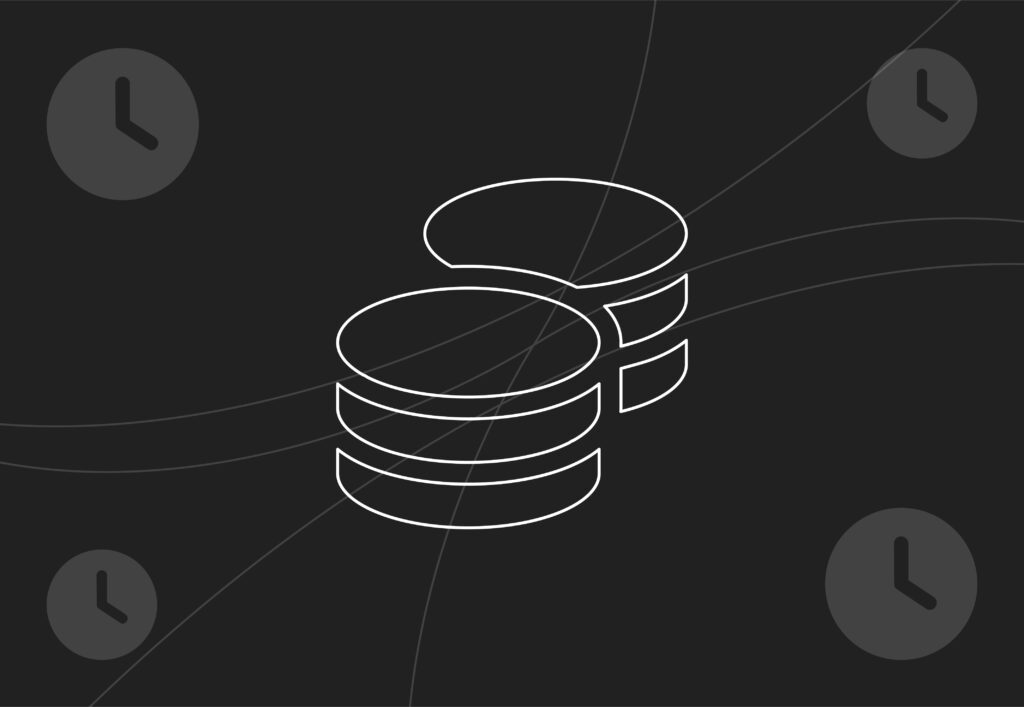
What is PPC remarketing and retargeting?

In a time where consumers are constantly bombarded with information and an overwhelming array of products, businesses need to market themselves effectively to stand out. One of PPC’s most powerful strategies for this is remarketing and retargeting, both of which help brands re-engage potential customers who have already shown interest.
On average, 98% of users who visit a website leave without converting. Alongside this, the average time on page is found to be 54 seconds, making every second of user engagement extremely valuable. Within PPC, if the user has clicked on an ad, then the visit will have cost, therefore, remarketing helps businesses maximise their return on ad spend by keeping their brand top of mind, thus encouraging users to return.
Both remarketing and retargeting play a key role in customer acquisition and retention, providing businesses a second chance to convert more customers. While they share many similarities, there are also key differences between the two approaches.
What is remarketing?
Remarketing, within PPC, allows businesses to re-engage potential customers after they have already visited a website. When a user lands on a site and accepts cookies, a tracking code is set in their browser, enabling advertisers to monitor their activity. This data can then be leveraged to serve highly relevant ads tailored to the user’s previous interactions, increasing the likelihood of conversion. Remarketing primarily targets users who left the site before completing a desired action, such as making a purchase or filling out a form. However, it extends beyond just display and search ads, it also plays a key role in broader marketing efforts, including email campaigns and SMS. By reminding users of products or services they showed interest in, businesses can effectively guide them back into the conversion funnel. Remarketing is also a really effective method to drive repeat purchases from not only new customers but also existing ones. By delivering personalised messages, businesses can aim to enhance customer retention, increase lifetime value, and maintain strong brand awareness.
A key aspect of remarketing is its multi-channel approach, where the user’s first interaction with a website, often through a paid Google ad, can be remarketed with specific targeted messaging across various platforms. For example, a user who browses products on a website may later receive an email reminder about those items or see a paid social ad reinforcing their interest. This omnichannel strategy ensures that the remarketing aligns with brand goals while maintaining consistent engagement across multiple touchpoints. The users are already in at least one of your channels, and focus is placed on engaging users in those channels that they are already in. Usually for remarketing users have provided details through, for example, a sign up or purchasing. This therefore means the data has been provided by a user through previous marketing efforts or simply a conversion. As you have specific data on the customer, the remarketing efforts can easily be personalised. Personalisation is what makes remarketing so powerful. With these insights into a customer’s past behaviour, businesses can tailor ads to match individual preferences. For example, if a customer previously purchased a dress in a specific colour, remarketing efforts can highlight a newly released colour of that dress or similar styles, increasing the likelihood of repeat purchases. By leveraging past interactions, brands can create highly relevant, engaging experiences that drive conversions and encourage customer loyalty.
Effective remarketing relies on a well structured customer relationship management (CRM) system to store and organise the valuable user data. This system plays a crucial role in tracking user interactions, purchase history, and engagement levels, allowing businesses to create targeted and relevant remarketing campaigns. However, the data must be used correctly to drive valuable engagement.
To maximise the impact of remarketing efforts having skilled email marketing professionals is highly valuable. These individuals can create personalised messages that actually resonate with users, encouraging them to return and complete a purchase or take another desired action. Whether through abandoned cart emails, product recommendations based on browsing history, or exclusive discount offers, an effective email marketing strategy ensures that remarketing efforts will remain relevant.
By combining a robust CRM system with email marketing strategies, businesses can build stronger customer relationships, increase retention, thus drive higher conversion rates. The seamless integration of data management and personalised outreach ensures that every remarketing effort is optimised for success.
What is retargeting?
Where remarketing takes a multi-channel approach, incorporating email marketing, SMS, and other direct communication methods, retargeting primarily focuses on leveraging paid media to reconnect with users who have previously engaged with a brand. Retargeting is an effective strategy to re-engage potential customers by displaying targeted ads across various online platforms, ensuring that brands stay top of mind even if the user did not initially convert.
This advertising method is particularly useful because it allows businesses to reach users who have interacted with their website in any capacity, whether by browsing product pages, adding items to a cart, or simply visiting the homepage. Unlike remarketing, which relies on user-provided data such as email addresses or phone numbers, retargeting operates through website tags, most commonly in the form of cookies. These tags collect information about user behaviour, enabling ad platforms like Google Ads and Facebook Ads to serve personalised ads to those who have previously shown interest.
While retargeting does not offer the same level of personalisation as remarketing due to the limited amount of user data available, it remains a highly effective tool for reinforcing brand awareness and increasing conversion rates. Even without access to detailed customer insights, businesses can still create engaging ads that remind potential customers of the products or services they viewed. Additionally, dynamic retargeting can further enhance ad relevance by showcasing specific products a user previously interacted with, making the messaging feel more tailored.
When executed correctly, retargeting plays a key role in digital advertising strategies by recapturing lost traffic, strengthening brand recall, and ultimately driving users back to complete their customer journey. By continuously optimising ad creatives, audience segmentation, and placement strategies, businesses can maximise the effectiveness of their retargeting efforts, subsequently achieving higher returns on investment.
How to apply remarketing and retargeting in Google Ads?
The most effective way to implement remarketing within Google Ads is to create a specific remarketing campaign. To begin, businesses need to enable remarketing in Google Ads by accessing Audience Manager and creating audience lists based on user interactions, such as website visits or abandoned carts. A crucial step is installing the Google Ads remarketing tag on the website, either manually or through Google Tag Manager, allowing Google to track visitor activity. Once the tag is active, advertisers can create remarketing audience lists, segmenting users based on engagement levels and setting a membership duration to determine how long users stay in the list. After audience segmentation, a remarketing campaign can be launched by selecting an appropriate campaign type, Display, Search, Video, or Shopping and applying the audience lists for precise targeting.
The next step is designing remarketing ads, where businesses can use dynamic remarketing to show personalised product recommendations, carousel ads to showcase multiple items, or responsive display ads for flexibility across different placements. Monitoring performance is essential, with key metrics such as conversion rates, click-through rates (CTR), and cost per acquisition (CPA) providing insights into campaign effectiveness. Advertisers should continuously refine audience targeting, update ad creatives, and adjust bidding strategies to improve results. To further improve remarketing efforts, businesses can explore additional strategies like customer list remarketing, video remarketing for users who engaged with YouTube content, remarketing lists for search ads to re-engage past visitors on search results, and lookalike audiences to target users with similar behaviours. By leveraging remarketing effectively, businesses can re-engage potential customers, maximise return on ad spend, and significantly improve conversion rates.
When to use remarketing and retargeting?
Remarketing and retargeting should be used strategically to re-engage potential customers based on their previous interactions with a brand. These methods are effective when users have shown intent but have not yet converted, such as abandoning a cart, browsing product pages, or engaging with content without taking action. Remarketing is best used when businesses have collected first-party data, such as email addresses or purchase history, allowing for personalised marketing through email campaigns, SMS, or targeted ads. This is ideal for nurturing leads, driving repeat purchases, and maintaining customer relationships. Retargeting, on the other hand, is most effective when aiming to recapture lost website visitors through paid media. It works well for reminding users about previously viewed products, offering time-sensitive promotions, or reinforcing brand awareness through display and search ads. Businesses should use remarketing and retargeting when they want to maximise their ad spend, improve conversion rates, and maintain brand visibility among users who have already expressed interest. These strategies are valuable for both e-commerce and service-based industries, where multiple touchpoints are often needed before a customer commits to converting. Within e-commerce specifically, the focus of the bulk of the remarketing efforts would be on targeting those who’ve added to cart and not converted. Where in lead gen concentration can be placed on going after users who have spent a certain amount of time on a page or those who have started the lead form but not completed it.
Additionally, remarketing and retargeting campaigns should be continuously optimised by segmenting audiences, adjusting bid strategies, and testing ad creatives to ensure relevance and effectiveness in driving conversions.
Benefits of retargeting and remarketing
These strategies ensure that businesses stay top of user mind and increase conversions whilst making the most of their advertising budget. Below are the key benefits of using remarketing and retargeting in marketing campaigns:
Increased conversion rates
One of the biggest advantages of remarketing and retargeting is the ability to convert users who have already expressed interest in a product or service. Since these users have previously engaged with the brand, they are more likely to convert compared to first time visitors. By showing tailored ads to these potential customers, businesses can encourage them to return and complete their purchase.
Cost-effective advertising
Compared to broad targeting strategies, remarketing and retargeting focus on users who have already engaged with the brand. This makes them a more cost-effective option, as businesses are spending their ad budget on high-intent users rather than trying to attract new ones who may not be interested. Additionally, remarketing campaigns tend to have higher click-through rates and lower cost per click, thus maximising return on investment.
Enhanced personalisation
Since remarketing and retargeting rely on user data, they allow for highly personalised ads. Businesses can create audience segments based on user behaviour, such as browsing specific product categories, abandoning carts, or previously making purchases. This enables targeted messaging, such as offering a discount on an abandoned item or suggesting complementary products, which increases the chance of conversion, the more tailored a remarketing ad is to a user which has previously interacted with an ad or landing page, the more likely it is that why’ll convert second or third time around.
Strengthened brand awareness
Even if a user does not convert immediately, repeated exposure to a brand through remarketing and retargeting helps reinforce brand awareness. Consumers often need multiple touchpoints before making a purchase decision, and these strategies ensure that a business remains visible throughout the customer journey. This is particularly beneficial in competitive industries where users are comparing multiple options before deciding.
Improved audience segmentation and insights
Remarketing and retargeting campaigns provide valuable data on user behaviour, allowing businesses to refine their marketing strategies. By analysing how different audience segments respond to ads, businesses can optimise ad creatives, bidding strategies, and targeting parameters to improve performance.
Conclusion
Although a successful marketing strategy relies on a holistic approach, remarketing and retargeting are extremely beneficial for businesses looking to maximise conversions, improve ad efficiency, and maintain brand presence. By leveraging these tactics, businesses can engage potential customers at the right time with the right message, ultimately driving growth and profitability.
If you want to run a successful remarketing or retargeting campaign but you feel like you may need some guidance, then please don’t hesitate to reach out to us via our website.


